This WTMJ Guest Op-Ed was originally posted as the final installment of The Recombobulation Area’s “Expanding The Divide” series.
We need to take a step back and rethink the expansion of Interstate 94 in Milwaukee.
The $1.1 billion proposal, which would reconfigure the stadium interchange and widen a 3.5-mile stretch of the highway from six to eight lanes right in the middle of the city, is not a good plan.
The priorities for the project are completely upside down. Metro Milwaukee is one of the most racially segregated regions in this country; this would likely further that segregation.
Battling the effects of climate change is going to necessitate a future with fewer cars on the road; supporters of this project have a stated goal of more cars on the road, polluting our air and water and contributing to a global catastrophe. The metro area has woefully inadequate public transportation; this project — and the deep cuts to Milwaukee transit state leaders are delivering along with it — treats that dire need as a throwaway afterthought. Local roads that are just as in need of reconstruction are ignored. Even within the project, it prioritizes the wrong interchanges. Addressing congestion in the region isn’t even a legitimate concern, as Milwaukee is in the bottom 10% for commute times among major cities in North America.
At every level, it misses the mark.
The financial gulf between modernization — supported by even the most ardent highway widening opponents — and expansion on this 3.5-mile stretch of interstate is about $300 million. That whopping nine-figure price tag is not taxpayer money well spent if it’s going to further divide the city, contribute to climate change, pollute our rivers, neglect local roads, and fail to address transit shortfalls. It is certainly not worth the cost if the goal is to solve a problem that is minor at most, and far from the region’s greatest or most urgent.
Democratic Governor Tony Evers was wrong to revive the highway expansion project and put it in the state budget, the Republican-controlled state legislature was wrong to approve it, and it would be a mistake to see this proposal move forward in Milwaukee.
But the future for this project is not yet set in concrete. The start date on construction has been delayed to 2022 through the addition of a supplemental Environmental Impact Statement (EIS), and state and local leaders have promised a robust public process in the months to come.
That EIS and the public process promised to come with it is our opportunity to rethink this at the state and local level. Leaders from the state, county and city will need to play a role in having this dialogue and have the conversation at the magnitude that this billion-dollar project demands.
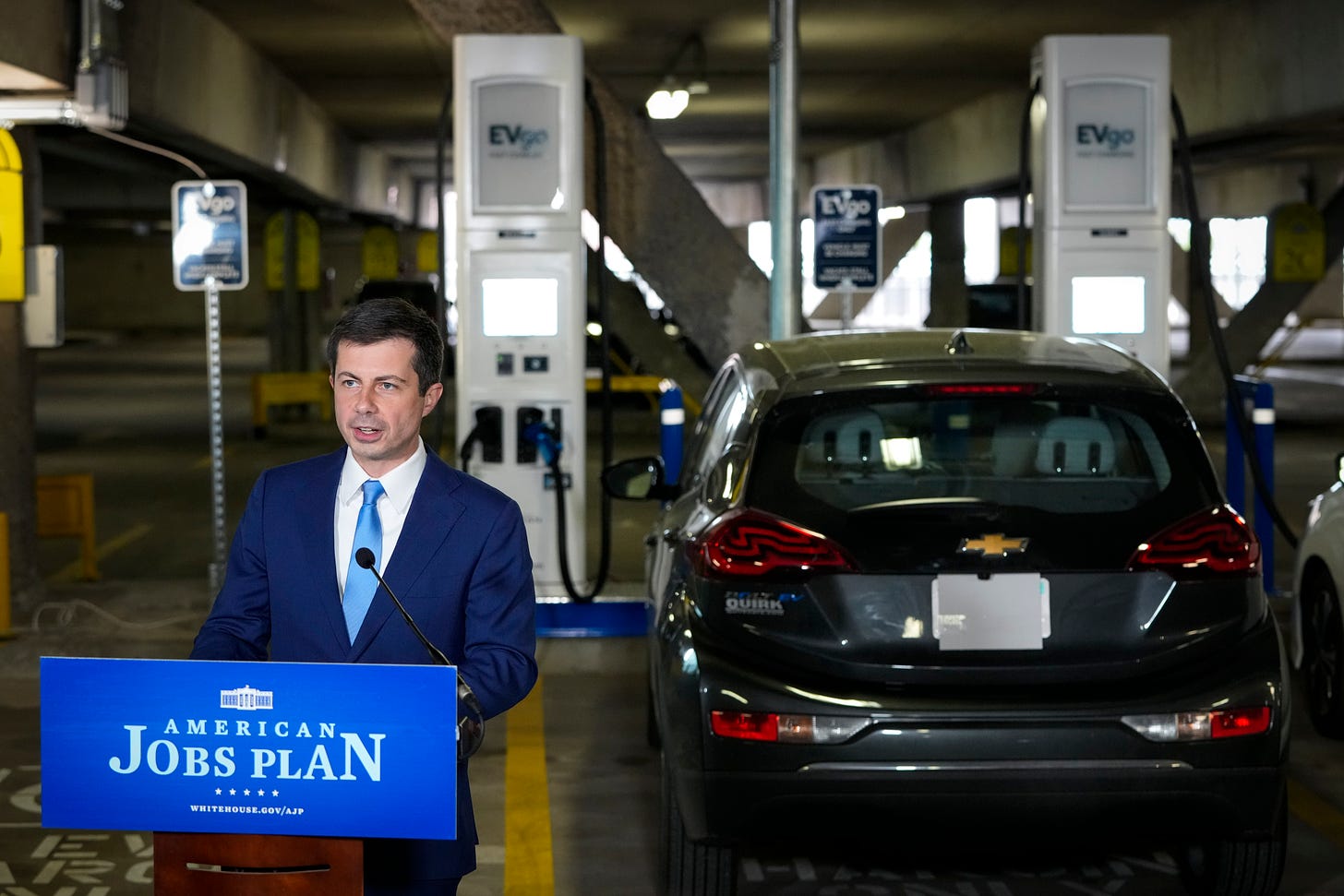
Other important forces are at play here, too. The federal government’s new approach toward highways, as evidenced by halting a proposed expansion of I-45 in Houston, has the potential to put the brakes on funding for expansion in Milwaukee.
Secretary of Transportation Pete Buttigieg has put equity at the forefront of his mission leading that agency, saying in testimony at the House Committee on Transportation and Infrastructure that “now is the time to finally address major inequities—including those caused by highways that were built through Black and Brown communities.” That message gets complicated when you greenlight a highway expansion right in the center of what is perhaps America’s most segregated city.
Another factor worth considering, as far as the federal government’s role in highways is concerned, is the Biden administration’s infrastructure bill currently making its way through Congress. There is potential in that bill not only to address some of Milwaukee’s longstanding infrastructure issues like its tens of thousands of lead pipes, but to “modernize” highways across the country. The initial bill proposal from the White House calls for a $115 billion funding increase for the modernization of bridges, highways and roads, and modernization is where consensus lies on this issue.
Craig Thompson, secretary-designee from the Wisconsin Department of Transportation (WisDOT), even said in his interview with The Recombobulation Area that funding from Biden’s infrastructure bill could potentially go toward the I-94 East-West project.
So, beyond the many reasons not to widen the highway in the first place, advancing this I-94 expansion proposal seems at odds with the goals of the new presidential administration, and seems needlessly hasty as a potentially major shift in federal infrastructure spending looms.
And this is a mammoth project we’re talking about. $1,100,000,000. This will reshape the city of Milwaukee for a generation to come. Is this really the way we want to do this?
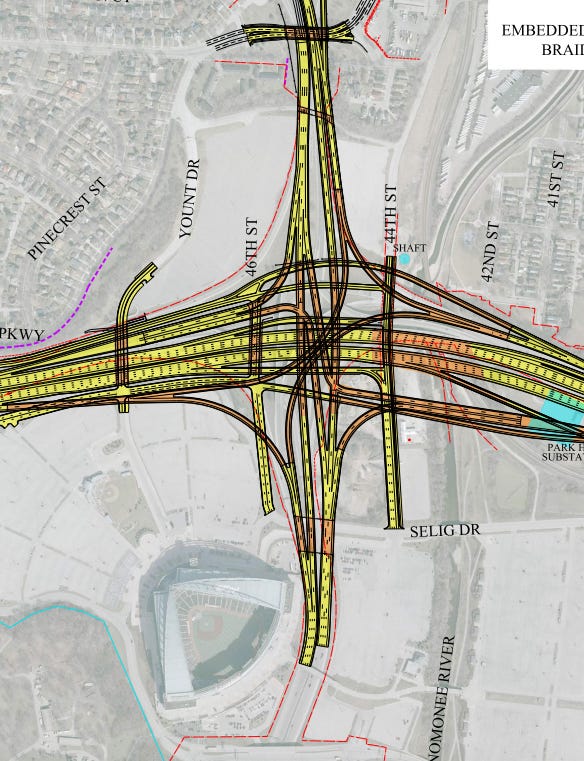
Milwaukee now has an opportunity to rethink this project, so let’s think big.
It’s time to get outside the framework of simply adding a lane going each way, or even rebuilding the highway in its existing footprint. What has to happen now is for this city to enter the conversation being had about removing highways, reimagining infrastructure, and rebuilding for a more equitable future.
It’s time to tear down the Stadium Freeway.
This highway spur is not serving the city well in its current form, and should be converted to a boulevard. If we are going to be spending a billion dollars to reshape the infrastructure of the west side of Milwaukee, let’s do something that would have the potential to bring truly meaningful change to this city.
Already existing as a boulevard south of I-94, the stretch of Wisconsin Highway 175 north of the interstate is a physical barrier that is unnecessarily dividing this segregated city. If you look at a map of the demographics of Milwaukee, you’ll see that neighborhoods west of the highway are majority white, and to the east they are either majority Black, or among the neighborhoods in the city that are the least segregated.
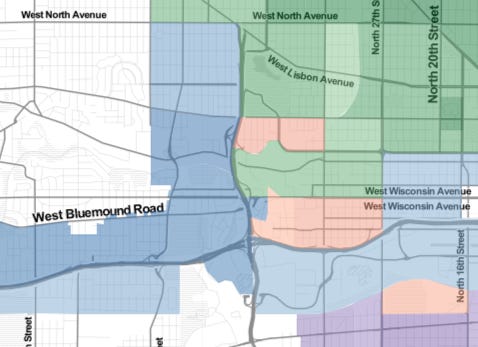
Isn’t that the type of unnatural boundary that cities like Milwaukee should be looking to remove? Shouldn’t the least segregated neighborhoods in the most segregated city be places to invest in?
Milwaukee leaders talk all the time about wanting to bridge divides in this city and address the long-festering problems plaguing the region. Tearing down this highway and investing in diverse neighborhoods could be an important step toward that larger goal.
Because when leaders talk about how highways are dividing us, they’re not talking about the past. They’re talking about the present. These highways are dividing us now, and by making the decision to move forward with the proposed expansion of I-94, we are choosing to create more divisions in the future. If this is a project that’s supposed to last for decades, it should instead be done in a way that actually takes on the challenges of the future instead of perpetuating the problems of the past. Removing an unnecessary highway spur is a way to do that differently than seeing a highway and adding a lane to it.
Historically, this freeway spur was not built for the purpose it now serves. It was originally designed to extend north to Ozaukee County, and would have connected to the Park West Freeway, but ended at being the just-under 2-mile stretch of highway that it has been since it opened in 1962. The Park West Freeway never happened and the Ozaukee County extension never happened (thankfully), making the Stadium Freeway a relic of a plan that never came to fruition. Almost sixty years later, it’s unclear why it needs to exist.
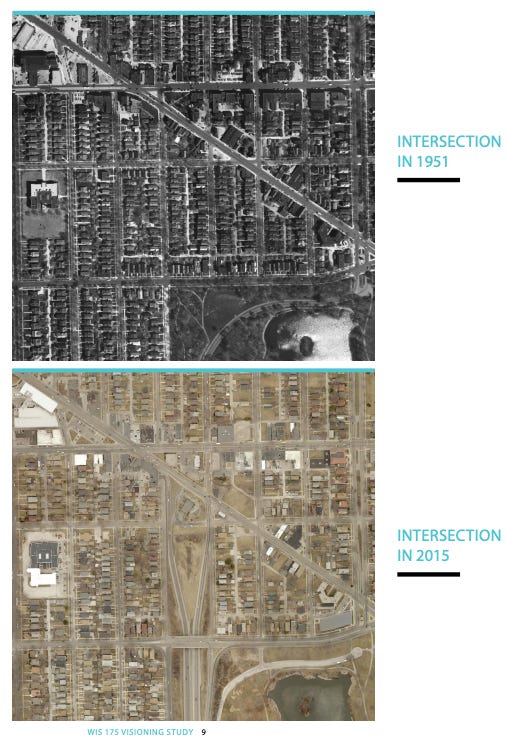
Right now in Milwaukee, we are also seeing a shining example of what removing a highway can lead to in the new heart of downtown. You can draw a straight line from the removal of the Park East Freeway in the early 2000s to the development of Fiserv Forum and the Deer District in the late 2010s.
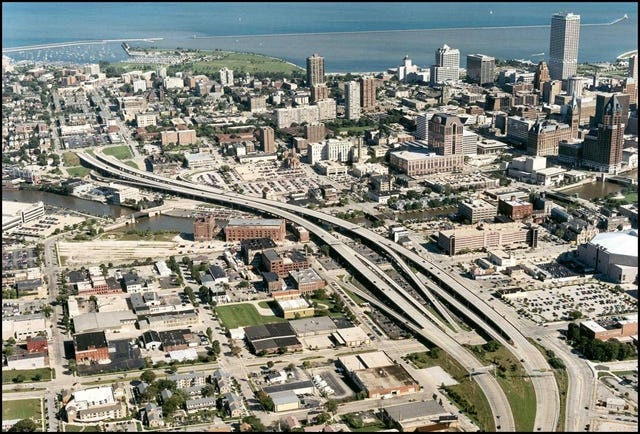
That part of the city that used to be a highway is now a bonafide destination, a worldwide phenomenon, generating an estimated $4 million in economic activity during each of the Milwaukee Bucks’ home playoff games. Here’s one clear case where removing a highway spur worked out extraordinarily well for Milwaukee. Deer District @DeerDistrictWho’s here cheering with us?! 🙋♀️🙋♂️🙋 #FearTheDeer July 4th 202126 Retweets185 Likes
Converting a freeway into a boulevard could work out well for the west side of town, too.
One place in particular that could stand to benefit dramatically from such a change is Washington Park. This is quite possibly the city’s best park away from the lakefront, and yet its entire western border runs into a highway, creating an unnatural separation from the very residential Washington Heights neighborhood. There are much better ways to utilize this gem of a park.
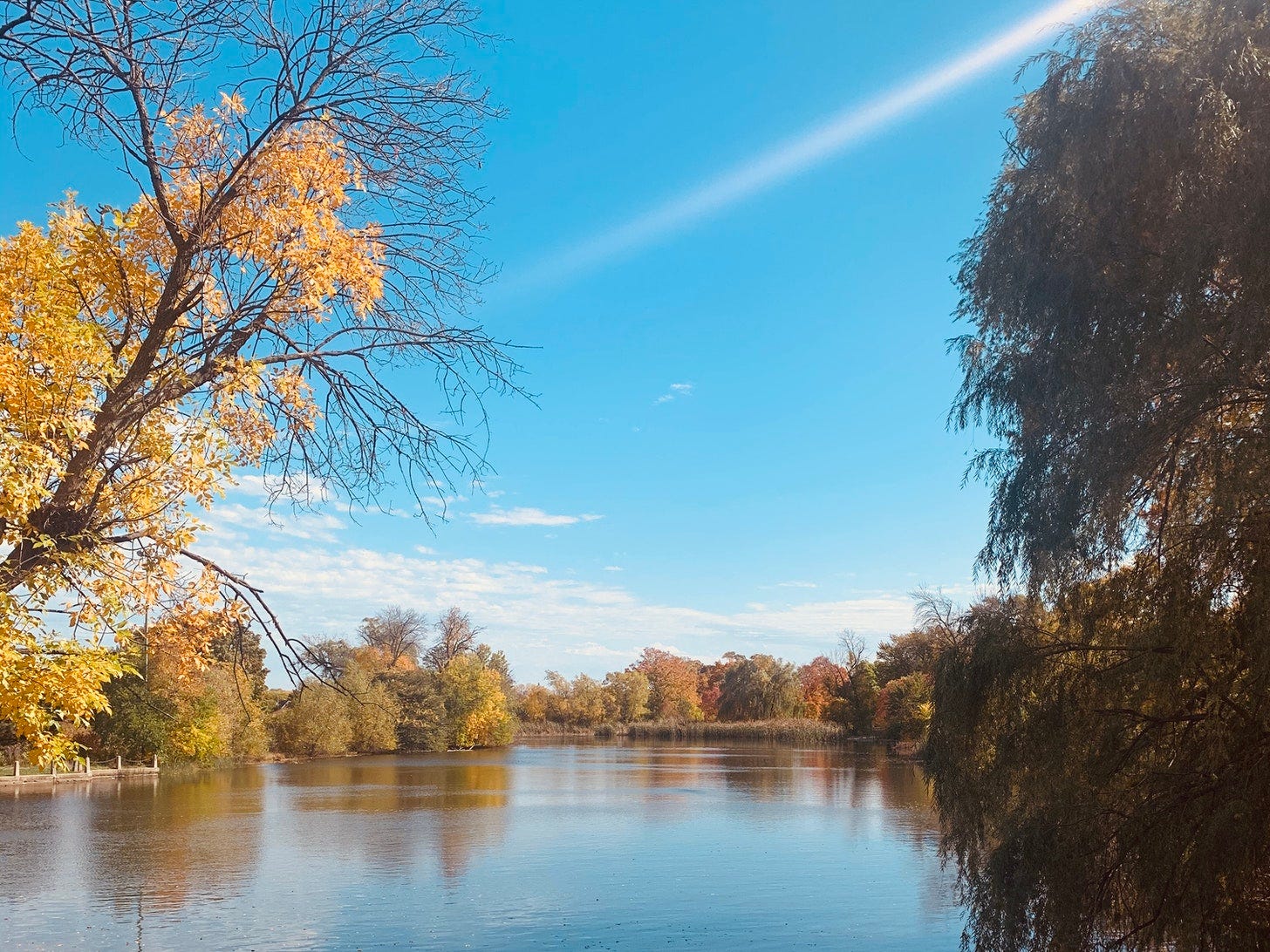
And at the south end of the highway spur, where it technically begins at National Avenue, big changes could soon be coming, as well. Komatsu Mining is moving its North American headquarters across town to Milwaukee’s Harbor District, where it is currently constructing the largest new urban manufacturing plant in the nation. In West Milwaukee, it will leave behind the plant that was once home to Joy Global, and with its future uncertain some have suggested that the site presents opportunities for development connected to American Family Field.
Could the Brewers look essentially right across the street from their ballpark for the type of sports-centered development that’s working so well for the Bucks right now? It’s a question they have to be considering, especially since the lack of ancillary development is among the weaker attributes of Milwaukee’s Major League ballpark.
Most importantly, though, what this project could do is address some of Milwaukee’s more pressing issues — certainly more pressing than shaving off a few minutes of commute time. For years, one of the criticisms we’ve heard of the city is that there is too much emphasis on developing downtown, and not enough on investing in the neighborhoods. Well, here is an opportunity to foster development in neighborhoods like Martin Drive, Miller Valley, Sherman Park, Washington Park, Washington Heights, Wick Field, and Uptown that are right in the shadow of the Stadium Freeway. This could be a new place to build housing, develop new small businesses like restaurants and retail, create jobs, and bring better transit options to those who need it right in those neighborhoods. Subscribe
Of course, the possibility of tearing down the Stadium Freeway is far from a brand new idea. These neighborhoods have had this conversation before.
In 2017, the city of Milwaukee worked with WisDOT on a “visioning study” that was largely focused on the future of the north end of the highway, where it meets the intersection of North Avenue and Lisbon Avenue at an intersection the study referred to as “confusing and unpleasant to both motorists and pedestrians.”
A standout among the options presented would be to pull the highway back from that intersection and perhaps begin the process of reimaging the freeway. Here’s how it would look to convert the north stretch of the highway from a three-lane highway to a two-lane boulevard with one parking lane, beginning at West Lloyd St.
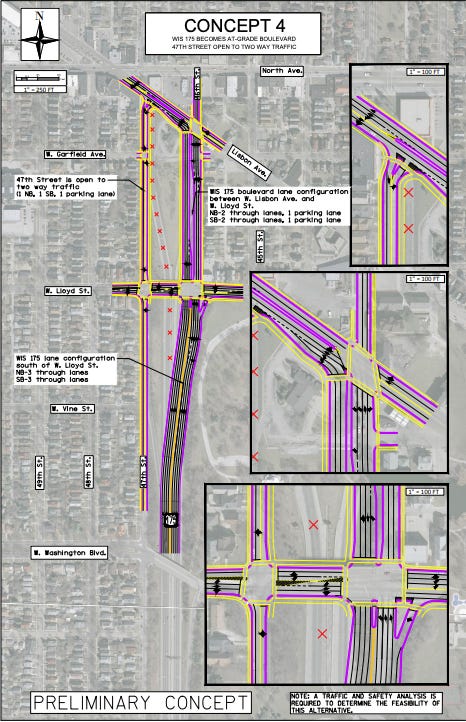
However, the report reads, “while some stakeholders expressed the desire (to) remove the entire freeway altogether and reintroduce the city grid, this was beyond the geographic scope of this study. That longer term possibility merits additional study when the Stadium Freeway is reconstructed.”
When asked about the possibility of tearing down the Stadium Freeway and converting it to a boulevard, Thompson said that it is something that’s under consideration at WisDOT, but for something further out in the future — not as part of the expansion of the East-West corridor.
“I don’t think we could do it as part of this project,” he said. “We inquired with the FHA, I think it would be beyond the scope. But it is something that we are willing to see if we can do visioning projects with.”
WisDOT and the Evers administration need to recognize that the time to have the conversation about the future of the Stadium Freeway is now.
Milwaukee and Wisconsin need to seize this opportunity to think differently about its infrastructure, and about its future. We can’t keep expanding our divisions over and over and expect to see different results.
It’s time to tear down this highway, convert it to a boulevard, and rename it Henry Aaron Way.
###
This WTMJ Guest Op-Ed was originally posted as the final installment of The Recombobulation Area’s “Expanding The Divide” series.
Dan Shafer is a journalist from Milwaukee who writes and publishes The Recombobulation Area. He previously worked at Seattle Magazine, Seattle Business Magazine, the Milwaukee Business Journal, Milwaukee Magazine, and BizTimes Milwaukee. He’s also written for The Daily Beast, WisPolitics, and Milwaukee Record. He’s on Twitter at @DanRShafer.
More about WTMJ Guest Op-Eds: WTMJ Radio has always prided itself as a hub for news/talk/sports commentary. For nearly a century on WTMJ, local leaders, professional athletes, Wisconsin residents, lawmakers, listeners, and others have provided essential conversation on a variety of topics and local issues. That’s why we’re excited about our latest initiative, WTMJ Guest Op-Eds. It’s our hope that by offering the WTMJ digital platform a variety of critical thinkers, we will provide more ideas and dialogue in order to move the conversation forward on several local initiatives. Views expressed in these columns are not those of WTMJ Radio or Good Karma Brands. Click to see more WTMJ Guest Op-Eds.
If you’re interested in becoming a WTMJ Op-Ed Guest columnist, and would like to be considered, email us here.

























